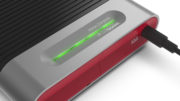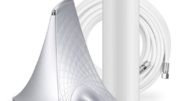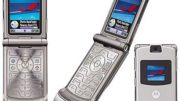So far in 2022, I have read a lot of articles with the same sentiment. There’s a feeling out there that 5G just isn’t living up to the hype. I get it, I really do. But let’s take a deeper look and try to understand why that is.
The 5G hype
Here’s the big problem. Most people think that the real purpose of 5G is to give you insanely fast speeds. That’s how it was advertised: download a 4K movie in 10 seconds. There are two problems with that. First of all most people do not need to download 4K movies in 10 seconds. Second, that’s not the really important part of 5G.
The biggest improvement in 5G is really in its low latency. 5G connections at the same speed as LTE connections should feel faster, because there’s less time between your tapping on something and when you actually get it. This does require some work on the carrier’s end and the web site you’re looking at also needs to be able to move faster.
In fact, the biggest problem with 5G or even fast home internet is that a lot of web sites on the internet don’t move faster than 30 or 40Mbps no matter what type of connection you’re on. So in that sense, yes 5G isn’t living up to your expectations but it’s not the 5G, it’s the places you’re going to. And really you can’t blame your phone for that.
Getting those superfast connections
The other thing that needs to be said is that there are two types of 5G (and a third is coming). The really fast connections are what we call millimeter wave 5G or mmWave 5G. This is a 5G connection that takes place at a very high frequency, over 29,000MHz. That part of the broadcast spectrum is relatively empty so there’s plenty of room to put a lot of simultaneous connections.
The problem with mmWave 5G is that high frequency broadcasts take a lot of energy. On the cell tower side, you can only get about 1,000 foot range with the broadcast limits that are allowed. From the cell phone side, you get more like 350-500 foot range unless you want a phone with a car battery attached. So these high-speed connections are limited to areas where there’s a lot of people staying still in a small area. Think of downtown areas, convention centers, stadiums, that sort of thing.
The rest of the country is served by lower-band 5G, also called “nationwide 5G” or sub-6 5G (because it takes place at a frequency under 6,000MHz). Frequencies in this range are much more congested, since they’re already being used for other sorts of traffic. There’s just not enough room for people to get blazing speeds unless you limit access to just a few dozen people per mile. And of course, that’s not going to happen.
Why 5G is NOT a disappointment
Using your phone is about more than speed test apps. In fact unless you think there’s a problem with your device or your home you shouldn’t ever need a speed test app. I get it, bragging is fun. But those test numbers don’t have a lot to do with your experience.
5G gives you speeds higher than LTE in most cases. More importantly it gives cell carriers the ability to make better use of their limited resources. So as time goes on you don’t see as much congestion.
If you haven’t upgraded to 5G, give the folks at Signal Connect a call! They can review all your options and help you choose what you need, all from the comfort and safety of your home. They’ll send you a phone that’s ready to work when you turn it on! Just call 888-233-7563 during East Coast business hours and we’ll start the process!





